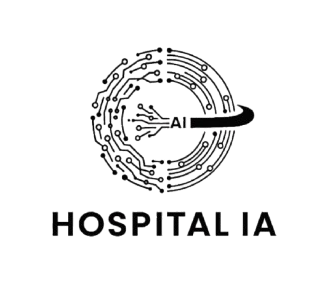
In an age where convenience often dictates our choices, the way we seek medical advice has undergone a remarkable transformation. No longer confined to traditional clinic visits, doctor consultations have stepped into the digital realm, bringing healthcare right to our fingertips. But what exactly happens when you schedule an online doctor consultation? How does this virtual encounter mirror-or differ from-the face-to-face experience we’re accustomed to? This article takes you behind the scenes of online medical consultations, unraveling the process from start to finish and exploring how technology bridges the gap between patient and provider in today’s connected world.
Understanding the Technology Behind Virtual Appointments
The backbone of virtual healthcare lies in sophisticated yet user-friendly technology that bridges the gap between patients and doctors. Central to this process is a secure, encrypted platform that supports real-time video and audio communication, ensuring privacy and compliance with medical regulations like HIPAA. These platforms often integrate with Electronic Health Records (EHR) systems, allowing doctors to access patients’ medical histories instantly, making consultations more informed and personalized.
Users typically interact with virtual appointment technology through intuitive apps or web portals designed for seamless scheduling, reminders, and post-consultation follow-ups. Key components include:
- High-definition video streaming: For clear face-to-face interaction and visual diagnosis.
- Instant messaging: Enabling quick questions and sharing of images or documents.
- Secure payment gateways: Offering hassle-free payment options.
- AI-powered symptom checkers: Assisting in preliminary assessments before consultation.
| Technology Element | Purpose |
|---|---|
| Encryption Protocols | Protect patient data |
| Video Conferencing Tools | Enable live doctor-patient interaction |
| Scheduling Algorithms | Optimize booking and reduce wait times |
| Cloud Storage | Maintain accessible, secure health records |

Navigating the Patient Experience from Booking to Diagnosis
When you decide to consult a doctor online, the journey begins with choosing a platform that suits your needs-often one that offers a seamless user interface and a broad selection of certified professionals. Booking an appointment typically involves simple steps like filling out basic personal information and selecting a convenient time slot. Many platforms offer features such as instant video calls, chat options, or even asynchronous messaging, allowing patients to explain symptoms at their own pace. This flexibility not only saves time but also helps in reducing anxiety, ensuring the patient feels comfortable from the outset.
Once connected, the doctor will gather detailed information through targeted questions, visual inspections via video, and sometimes by reviewing uploaded reports or images. Through clear communication and digital tools, online diagnosis is becoming increasingly accurate. Post-consultation, platforms often include easy access to prescribed medications, follow-up appointments, and even digital health records, all designed to keep the patient experience smooth and well-organized.
| Step | What Happens | Patient Benefit |
|---|---|---|
| Booking | Select doctor, time, and provide basic info | Quick & convenient |
| Consultation | Video call or chat-based symptom discussion | Comfort & flexibility |
| Diagnosis | Doctor reviews details & guides next steps | Accurate & personalized care |
| Follow-up | Prescriptions & future appointments managed online | Continuous support |

Ensuring Privacy and Security in Online Medical Consultations
When engaging in digital healthcare consultations, safeguarding sensitive patient information is paramount. Platforms employ end-to-end encryption to ensure that data transmitted between patients and doctors remains confidential and inaccessible to unauthorized parties. Multifactor authentication is another critical layer, verifying the identity of both parties to prevent fraudulent access and maintain a trusted communication environment. These combined measures create a secure virtual space where patients can feel confident sharing their health concerns without privacy worries.
Moreover, reputable online consultation services adhere strictly to regulatory standards such as HIPAA in the United States or GDPR in Europe, reinforcing accountability and transparency. Essential security practices typically include:
- Encrypted video calls and messaging
- Secure storage of medical records with limited access
- Regular security audits and software updates
- Patient consent protocols before data collection
| Security Measure | Purpose |
|---|---|
| End-to-End Encryption | Protects communication between patient and doctor |
| Multifactor Authentication | Verifies identities to prevent unauthorized access |
| Compliance with Regulations | Ensures legal handling of patient data |

Maximizing the Benefits of Telehealth with Practical Preparation Tips
To get the most out of your telehealth appointment, it’s essential to approach it with careful preparation. Start by ensuring your technology is fully functional-check your internet connection, test your webcam, microphone, and speakers beforehand to avoid any last-minute glitches. Have a dedicated, quiet, and well-lit space where you can discuss health concerns without interruptions. Organize your medical history, list current medications, allergies, and recent symptoms in one place to provide your doctor with a clear picture quickly. Taking notes before the consultation about key points or questions you want to discuss can help make the session more efficient and thorough.
During the telehealth visit, communication is key. Speak clearly, and don’t hesitate to ask your healthcare provider to explain or repeat information if needed-remember, these sessions lack physical presence, so clarity is vital. Use the opportunity to confirm next steps and digital prescriptions, if applicable. To assist you further, here’s a handy checklist to keep nearby as you prepare for your virtual visit:
- Stable internet and device readiness
- Quiet, private environment
- Medical records organized and accessible
- List of symptoms and questions
- Pen and paper or app for taking notes
- Insurance and ID details ready
Concluding Remarks
In the ever-evolving landscape of healthcare, online doctor consultations have emerged as a bridge between convenience and care. By harnessing the power of technology, they bring medical expertise right to your fingertips, breaking down barriers of time and distance. As digital platforms continue to grow more sophisticated, these virtual visits promise not only to complement traditional healthcare but to redefine how we approach wellness altogether. Whether you’re seeking a quick diagnosis or ongoing support, understanding how online doctor consultations work empowers you to make informed, timely decisions for your health in a modern world.



